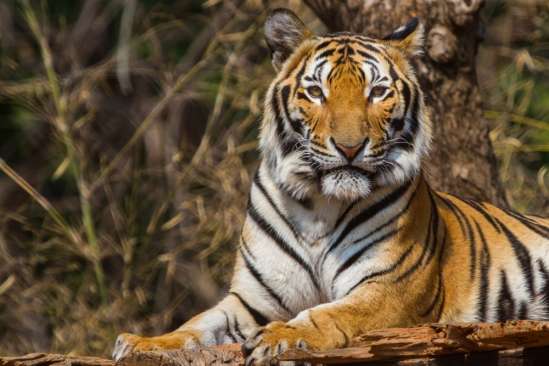Cornering endangered species

As certain species decline in number, the geographic areas they inhabit also shrink. Still, even with less space to occupy, these decreasing populations manage to remain locally abundant.
However, in the places where these species can still be found, they remain easy, affordable targets for hunters and fishermen. This in turn can drive the animals to extinction.
So found a group of UC Santa Barbara scientists whose research appears in the Proceedings of the National Academy of Sciences.
"We often think of species like elephants and bluefin tunas as being overharvested because of their high market value," said lead author Matt Burgess, a postdoctoral researcher in UCSB's Sustainable Fisheries Group. "Our results suggest that we should also be paying attention to their range contractions. In fact, range contraction can put a species at risk of overharvesting regardless of how high its market value is."
In order to determine which species are affected by this phenomenon, Burgess and his co-authors used a mathematical model to derive conditions under which it would be possible to profitably harvest a species to extinction.
Reviewing relevant literature to identify harvested ocean and land animals so impacted, the investigators found several endangered species—Bengal tigers, Asian elephants and Atlantic and Pacific bluefin tunas—whose geographic ranges have shrunk faster than their population sizes have declined. This kind of range contraction makes species especially susceptible to extinction.
"To date, humans have destroyed a much higher fraction of terrestrial habitats than marine habitats, so it's not surprising that we have seen more range contractions on land," says co-author Steve Gaines, dean of UCSB's Bren School of Environmental Science & Management.
The study also found schooling behavior—the tendency for animals to aggregate in large groups—to be an important risk factor for range contraction in declining fish populations. "It's ironic that the very behaviors, such as schooling, that protected species from predators now make them more susceptible to extinction by humans," says co-author David Tilman, a professor at UCSB's Bren School and Regents' Professor at the University of Minnesota.
Because climate change causes range contraction in many species, it could become an increasingly important risk factor for overharvesting in the future. "It's precisely those overharvested species that are least able to cope with climate change," says co-author Malin Pinsky, an assistant professor at Rutgers University in New Jersey. "We now know that one of the best ways to help animals survive climate change is to eliminate overharvesting."
Though the objective of the study was to identify the risk factors that incentivize severe overharvesting, its results underscore the importance of well-managed harvests. Imminent collapse or extinction is not necessarily the only available outcome for vulnerable populations, Burgess noted.
"For example, the International Commission for the Conservation of Atlantic Tunas recently enacted a rebuilding plan for severely depleted Atlantic bluefin tuna populations and already the eastern Atlantic population is showing signs of recovery," he said. "Our hope is that by drawing attention to the risk factors for overharvesting, we can inspire similar conservation and management success stories in other species."
More information: Range contraction enables harvesting to extinction, Matthew G. Burgess, Proceedings of the National Academy of Sciences, DOI: 10.1073/pnas.1607551114 , www.pnas.org/content/early/201 … /1607551114.abstract
Journal information: Proceedings of the National Academy of Sciences
Provided by University of California - Santa Barbara




















